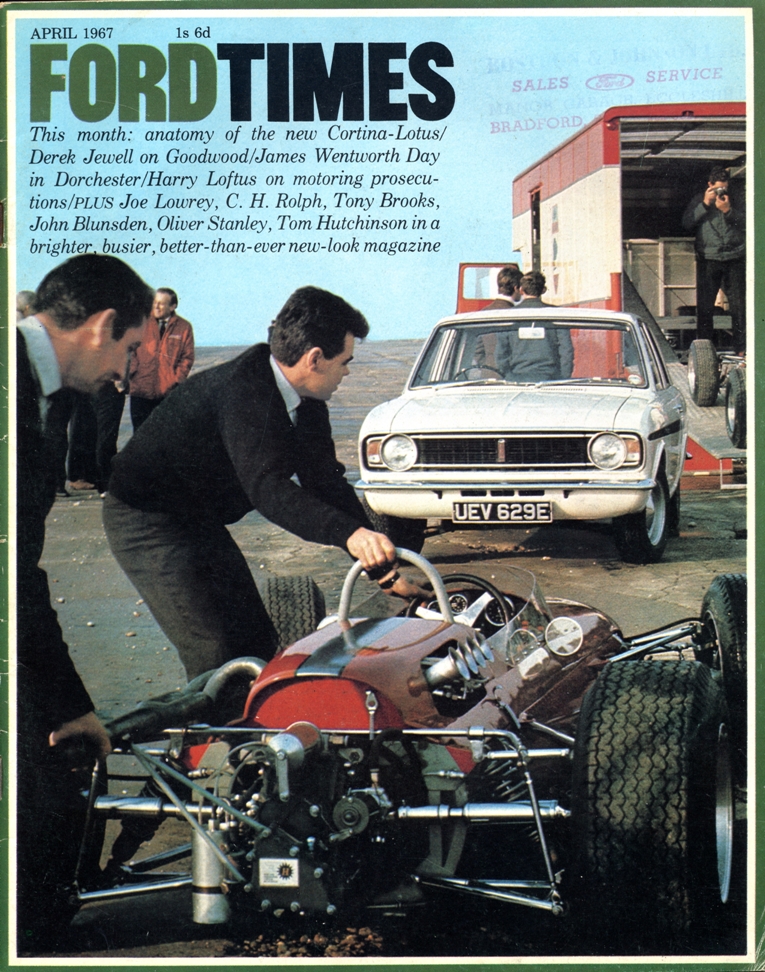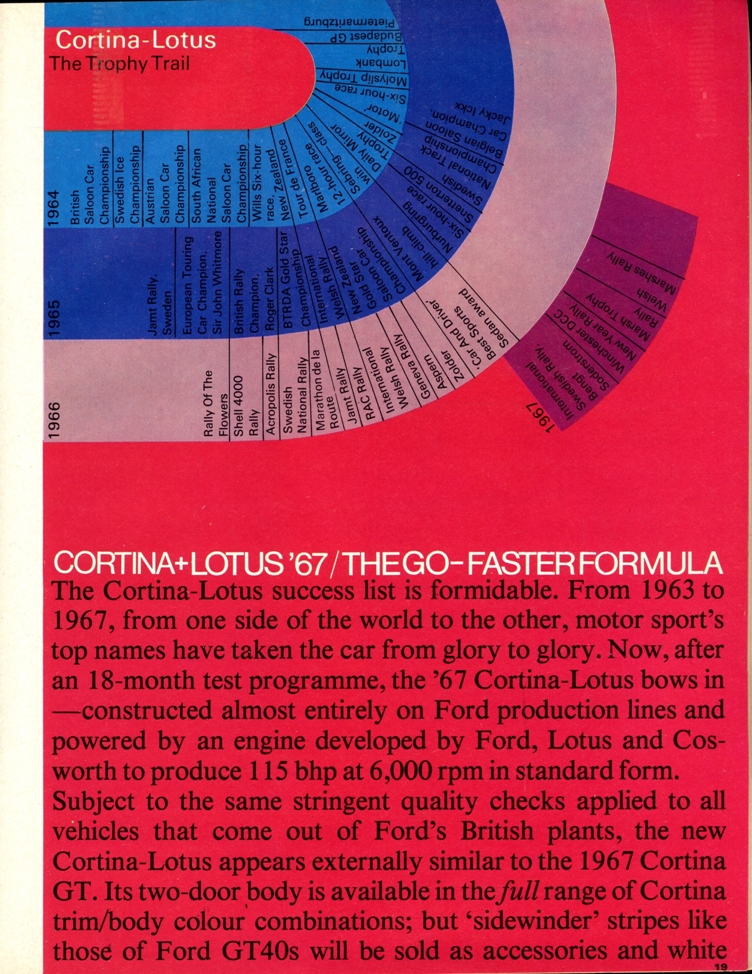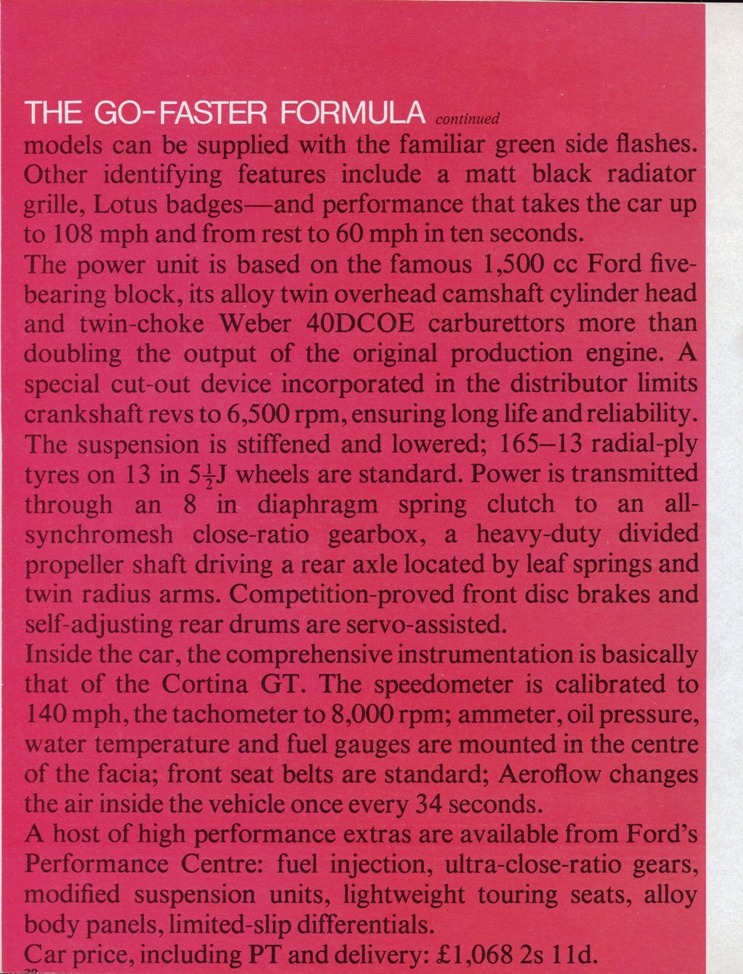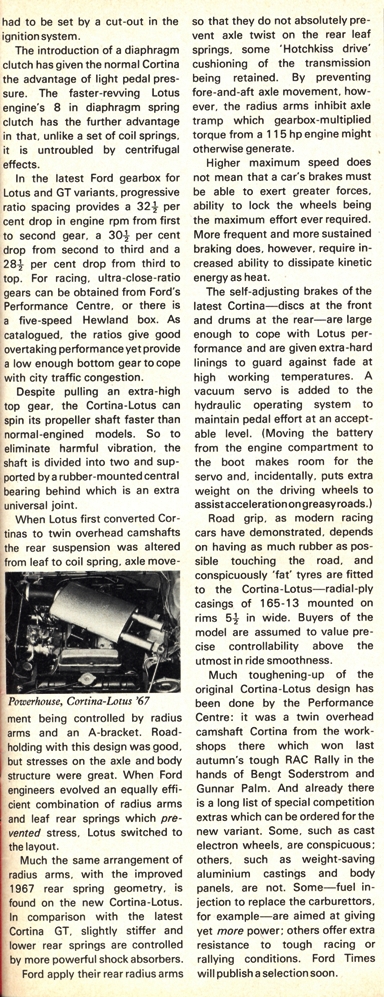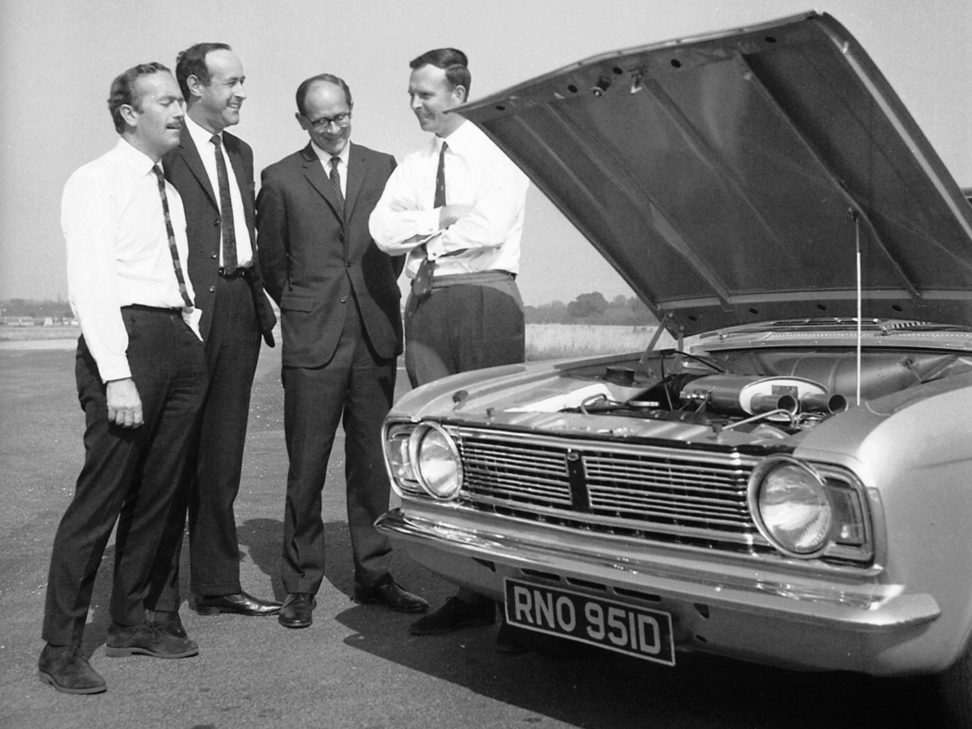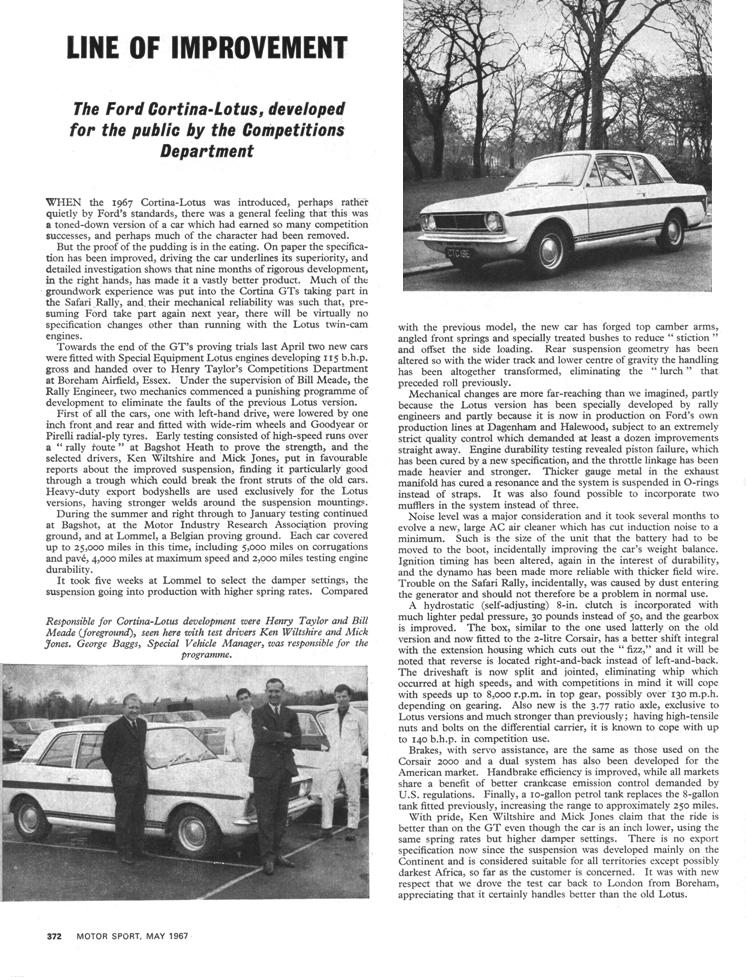Developing The 2nd Generation
Far from being a completely new car, designed and built by Ford instead of Lotus, the Mk2 Lotus Cortina was in reality a continuation of what Ford had been doing since the Mk1 Lotus Cortina had been launched in 1963.
Lotus had certainly provided the outline design for the modifications required for the Mk1, with Ford’s engineering works developing those designs into working, production components. Lotus created, with no model to use as a template, a version of the Cortina that could, and did, win production car races. The Lotus Cortina won the British and European Touring Car Championships in 1964 and 1965, and that was down to the Lotus engine and race car design, supported by Ford engineering and most importantly, Ford money.
In reality, Lotus had very little input to the development of the road going Lotus Cortina after launch, and it was Ford who rationalised the design, replacing the aluminium panels and castings, the close ratio gearbox, and the ‘A’ Frame suspension with the more standard, or near standard, Cortina components.
When the ‘A’ Frame rear suspension was dropped from the Mk1 Lotus Cortina in favour of the more traditional, and reliable, leaf spring set up, it was Ford’s competition department at Boreham who were brought in to put their experience in rallying the Cortina GT into practise with the Lotus.
This gave Boreham the opportunity to develop the Mk1 into a rally winning car in 1965, and that’s exactly what they did. Almost as a by-product, they also made a car that was now a much more reliable and viable road car.
So when the Mk2 Cortina range was being designed, thoughts of the development of the Lotus version turned to Boreham. The decision was no doubt helped by Lotus deciding to move from Cheshunt to Hethel, which was completed by November 1966, and they had two new cars to think about, the Europa and the Elan Plus 2.
At the end of the Mk2 GT development in April 1966, Two prototype GTs were delivered to Boreham for them to create the new Mk2 Lotus Cortina.
Their brief was simple. The Lotus Cortina was to be very closely based on the GT model, using as much GT content as possible. However, the Lotus had to retain it’s identity as created by the Mk1, but have the reliability that Ford customers expected from the Cortina, and be capable of being maintained by the established network of Ford dealers.
The starting point was in using the heavy duty 2 door GT shell, with anti-tramp bars on the rear and rolled arches on the front to accommodate the wider wheels. As for the Mk1, the battery had to go in the boot due to the Twincam and webers filling the space usually occupied by the battery, and a servo would be employed fitted to the front left inner wing.
The suspension was refined over many miles if driving on proving grounds and normal roads, and settled on damper settings and spring rates carefully balanced to provide safe and fast road driving. The car was lowered front and rear by 1 inch, with the handling package completed with radial tyres on 51/2 inch rims, as per the Mk1 Lotus Cortina.
Boreham certainly put their stamp on the car with the new air cleaner, which looked like an exhaust silencer sitting on top of the engine. This had the advantage of quietening down the harsh elements of the induction roar of the webers, whilst proving easy and quick access to the air filter for competition purposes.
Colin Chapman studies the Twincam installation in the prototype Lotus Cortina, based on a GT. This was taken in 1966 at Boreham, with Henry Taylor (next to ACBC), Alan Platt and another Ford executive.
The Mk 2 was developed from the outset as a slightly more refined road car. Most cars after all would be bought by owners who wanted performance with comfort and reliability. However, the competition department of Ford, based at Boreham, had grown up and developed a huge range of enhancements that could be provided for the Mk 2, and so a new ‘package’ was developed. This was the main difference between the Mk 1 and Mk 2, or the Lotus approach and the Ford approach.
On one hand, with the Mk 2 Lotus Cortina, Ford had a comfortable, reliable standardised high performance car that could be sold and supported with confidence around the world. On the other, a massive Performance Options package was available for the first time to the public which gave the customer the ability to replicate the ‘works’ cars if he so wanted.
From a sales viewpoint, this was a brilliant move. The vast majority of cars sold were completely standard, but the owners knew that they had, if they wanted, the basis for a full-blown race or rally car. And we’re all boy racers at heart! This ‘model’ of course continued with the Twincam Escort, and then ramped up a notch for the AVO Escorts, with a new purpose built facility at Aveley for manufacturing and modifying the performance Escorts.
It wasn’t the end of the relationship between Ford and Lotus, but it probably signified the beginning of the end.
The launch brochure for the Mk 2 Lotus Cortina show the car in a paddock alongside Lotus racing cars with a Lotus Elan in the background…obviously Ford wanted to maintain the link with Lotus and their obvious kudos to launch the car. Lotus formed a new Team Lotus around two highly modified Mk 2 Lotus Cortinas, fitted with the Formula 2 FWA engine, and campaigned by Graham Hill and Jackie Ickx, amongst others. I would imagine that the money to do this came from Ford.
Even as the Mk 2 Lotus Cortina was launched, Boreham were starting to develop the Twincam Escort…not Lotus Escort…which was itself launched in January 1968. Towards the end of Mk 2 production, the Lotus Cortina was marketed as the Twincam Cortina in European markets, and of course, the BDA engine replaced the twincam in the Escort in 1970.
The Mk 2 was slightly more popular that the Mk 1, even though it had quite a lot more internal competition with the Twincam Escort and 1600E, and a lot more external competition was in the market.
The Mk 2 had one specification, with the S/E 115 bhp engine as standard. It now came in the GT range of colours, although white with the green stripe (optionally painted on at the dealers site) accounted for probably 80% of sales.
The specification of the car at launch was, as mentioned above, much the same as the Mk 1 specification when it was finished. The steering and dash layout were rationalised with those of the GT, and the suspension was stiffened and lowered by 1 inch, after considerable trials by the lads at Boreham. The Mk 2 was launched in March 1967, nearly 6 months after the rest of the Mk 2 range.
Interestingly, Lotus still regarded the Mk 2 as ‘one of ours’ despite it now being built in Dagenham. Here is a photograph of the sales cars lined up at Hethel, with the Mk 2 bearing the famous 120 registration number adopted by many Lotus sales and management cars in the past. It is thought that this was Colin Chapman’s own car, which Graham Arnold used to say Colin much preferred to the old Mk 1. But famously, Colin Chapman rarely liked the road cars that he had a hand in designing or building.

Colin Chapman used an S/E wheel from a Mk 1 for his own (prototype) car:
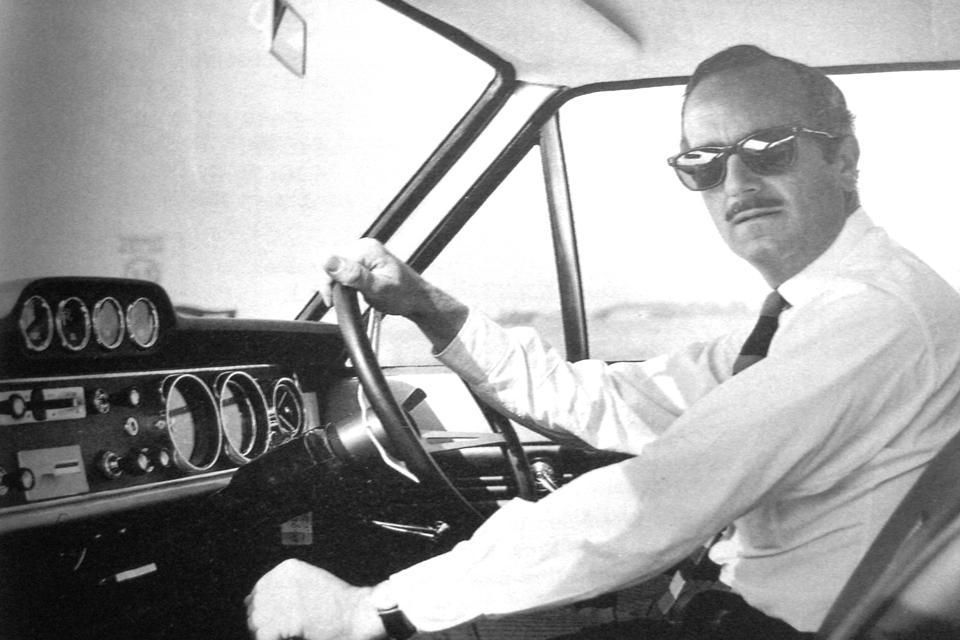
Here is a description from Motor Sport of the development of the Mk 2 Lotus Cortina by Fords competition department at Boreham.
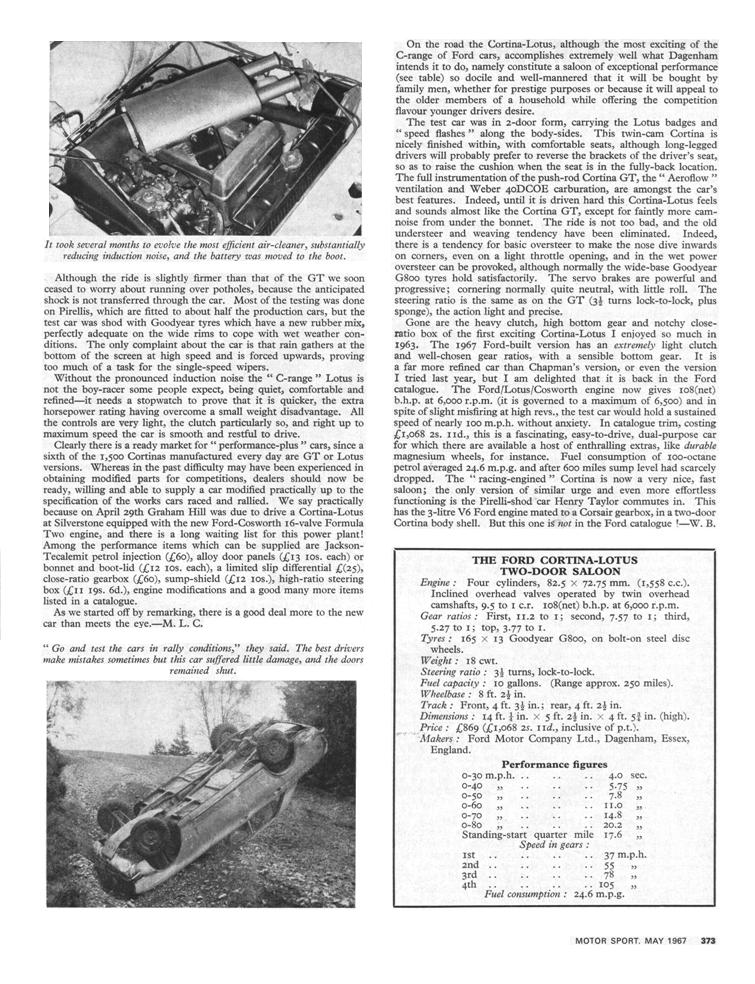
Here is a write-up from Ford Times, April 1967, specifying the car and giving the Ford rational for it’s development.
